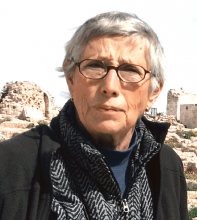You are here
Syria is the ultimate free-for-all free fire zone
Apr 11,2018 - Last updated at Apr 11,2018
This region has become a free fire zone. Any country can become a shooting gallery at any moment. A video of the shooting by an Israeli sniper of a Palestinian man standing motionless near the Gaza fence is symbolic in our times. Another Israeli who recorded the scene cheered, "Wow, what a video! Yay! What a video legend." After the video circulated on the Internet, the Israeli military said it would investigate the incident which, reportedly, took place several months ago.
Thirty Palestinians have been shot and killed by Israeli troops in the past two weeks while they protest 70 years of expulsion from their home, land, villages, towns and cities by Israel. Gazans have vowed to protest at the fence that imprisons them for six weeks ahead of May 15, the seven-decade anniversary of the proclamation of Israel. Gazans who read history or who are old enough to remember, know that Palestinians began to be systematically expelled by Israel's underground army after April 1, 1948, when the Zionists took delivery of a large consignment of arms from Czechoslovakia. During that period, 200,000-250,000 Palestinians out of the 750,000 ultimately driven from their homes had become displaced in Gaza, the West Bank and Jordan.
Syria has been a shooting gallery for seven long, destructive years. The first shootings took place when troops fired on protesters calling for reform in mid-March 2011 and the first opposition shooters appeared among the demonstrators in Daraa on March 20 of that year. Since then, Syria has suffered an orgy of violence, destroying urban areas and countryside, killing and maiming hundreds of thousands, and driving 11 million Syrians from their homes, half of them into refugeedom outside Syria. The civil conflict waged initially between the government and rebels morphed into a war between the secular government and takfiris and drew in regional and international powers engaging in proxy wars. Now that 65 per cent of Syrian territory is under government rule and 80 per cent of Syrians live in this area, Western powers and regional allies — which still want to topple the government — are changing tactics with the aim of undermining Damascus and countering the influence of its allies; Russia and Iran.
To do so, Washington has deployed 2,000 special forces in northern and eastern Syria, established multiple bases there and recruited, trained and armed thousands of Syrian Kurds and tribesmen. They now face a campaign by Ankara, which claims the Kurds are allied to Turkey's insurgent Kurds, to drive them from a broad strip of territory on the Syrian side of the Turkish-Syrian border.
Without any opposition from Syria's partners — Russia and Iran — or from the US, Turkey has, since 2016, occupied a triangle of territory south of the Syrian town of Jarablus. Turkey recently seized the Kurdish canton of Arbin in Aleppo province, drove out the Kurds, looted their homes and bulldozed their olive plantations.
Tanking advantage of the row over an alleged chemical weapons attack on the takfiri-held town of Douma east of Damascus, Israel bombed Syria's T-4 airbase east of Homs, killing several military personnel, including seven Iranians. Not a peep from the West or the Arabs in protest.
The US and France have threatened to mount attacks on targets in Syria in response to the allegation of the chemical attack, although there has been no independent verification that it happened and that the Syrian army was involved. In Syria, the shooting match never stops and keeps escalating. Syria is the ultimate free-for-all free fire zone.
The war on Yemen, the poorest country in the region, is a not only a tragedy, but also a disaster for Yemenis. Eighty per cent of the 28 million Yemenis depend on humanitarian aid for food. Millions are at risk of preventive diseases, like diphtheria and cholera. One million have already suffered from cholera and 2,300 have died. Of 1.8 million children under five, 400,000 are seriously malnourished. For several years, the UN has been giving a figure of 10,000 for civilian deaths, this number is totally out of date and dishonest.
Bombing and shooting continues while peacemakers fail to halt the conflict which has been projected by Riyadh, which launched its campaign in March 2015, as an effort to halt the expansion of Iranian influence in the Arabian Peninsula, although when the Saudis began bombing Iran had no interests in Yemen. These days, Iranian ballistic missiles find their way to the rebels and are fired, sporadically, into Saudi Arabia, with little effect.
Egypt is still struggling to crush Al Qaeda/Daesh-allied taqfiris based in North Sinai province. They attack army and police posts, mosques, and churches and invade Egypt "proper" to bomb other targets.
Iraq is a wreck, gripped by violence and sectarianism and in decline. The country is a client of both the US, which invaded and occupied the country in 2003, and Iran, the ally of the Shiite fundamentalist regime imposed by Washington. Three million internally-displaced Iraqis are mainly from Sunni cities and towns occupied by the now defeated Daesh.
Unless the Sunni community is rehabilitated and brought back into the circle of policymakers, Iraq will remain a failed state, its government beset by corruption and mismanagement. There are at least 9,000 US troops in Iraq, deployed allegedly to stabilise the country.
Lebanon is set to hold a parliamentary election on May 6, the first since 2009.
Saudi Arabia and Iran court current office-holders among the 976 candidates seeking seats in the country's 128-member assembly. Lebanon will remain divided and struggling, its president and parliament unable to tackle any of the desperate problems the country faces, including pollution, shortages of water and electricity and more than a million Syrian refugees. Shooting erupts from time to time.












